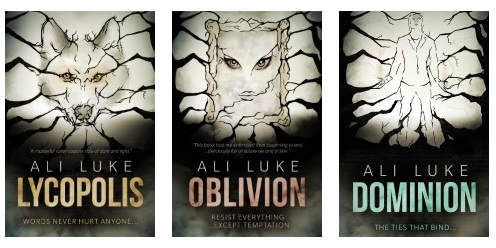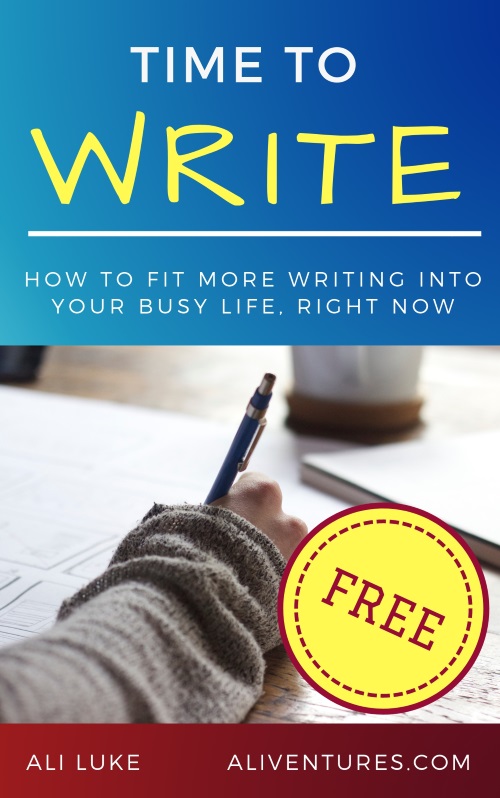John Gilbey on Writing Flash Fiction / Short-Short Stories

Image from Flickr by Creative Tools
This is the first post about some of the sessions I attended at Winchester Writers’ Conference, 2012. These posts are based on my own notes, and while I’ve tried to be as accurate as possible, I do not intend them to be comprehensive summaries of everything that was said – just the key points.
One of the best sessions I went to at Winchester Writers’ Conference was John Gilbey speaking on flash fiction / short-short stories.
John has written for several very well regarded publications here in the UK, like New Scientist and Nature, and he had lots of great advice to share on the art of writing very short stories.
Here’s what he said:
Why Write Short-Short Stories?
It’s fun! They’re fast to write (you can complete a short-short story in a single day) and so you can develop your skills quickly.
Think through the story in your head, deciding who, what, and where — and only writing this down once you have a story.
What’s “Short-Short”
Anything under 1,000 words — and occasionally as low as 50 words. A very short story could even be a series of tweets.
What Does a Short-Short Story Need?
It’s the same as any other story, but in minature. You need all the usual elements:
- Character (or characters)
- Location and scenario
- Plot and plot development
- Reader engagement
- And maybe a twist at the end (you shouldn’t have to explain the twist)
Characters
Keep your cast low. Two or three characters is enough, maybe four in a 1,000 word short story.
Each character should be very distinctive. There should be immediate appeal for the reader — or repulsion. You’ve got little time for subtlety … but your characters should still be three-dimensional.
You may want to leave room for a twist.
Location and Scenario
You could choose a familiar setting — an office, a home — or something exotic. It’s often good to pick somewhere you know well. When describing it, remember that small details have a big impact.
The scenario (the starting problem/situation) should be something that you understand and that the reader can relate to. It needs to be realistic and detailed enough to work.
Plot and Plot Development
Keep it simple! You only have room for very few scenes — perhaps three in a 1,000 word story. If the scenario is familiar, much of the development can be implied.
Maintain interest, tension, and intrigue. Keep the reader wondering what will happen next.
Your story needs to have a beginning, middle, and end.
Engagement
Think about these questions:
- Why should the reader care what happens? Empathy is important.
- Do you care about the character(s)? If you don’t care, why should the reader?
- What are you investing of yourself in the story? (Your direct experience, whether that’s happy or not.)
The Twist
Maintain tension and expectation until the last moment. Your twist should leave the reader smiling, laughing — or groaning! It gives your story a unique impact.
Achieving All This
To create a successful short-short story, you need:
- Ruthless efficiency and self-control
- A callous disregard for your favourite phrases
- The opinion of others (is the story complete, does the twist work, etc)
- Careful, impartial editing — edit as though the story is someone else’s work
- A cooling-off period: put the story aside and revisit it before sending it to magazines etc
Big thanks to John for a great talk! I hope my write-up has given you a flavour of it, and that you might give flash fiction / short-short stories a try in the future.
Make sure you get my next Winchester Conference write-up: pop your email address in the box below to get posts straight to your inbox (or click here for the Aliventures RSS feed).
About

I’m Ali Luke, and I live in Leeds in the UK with my husband and two children.
Aliventures is where I help you master the art, craft and business of writing.
Start Here
If you're new, welcome! These posts are good ones to start with:
Can You Call Yourself a “Writer” if You’re Not Currently Writing?
The Three Stages of Editing (and Nine Handy Do-it-Yourself Tips)
My Novels

My contemporary fantasy trilogy is available from Amazon. The books follow on from one another, so read Lycopolis first.
You can buy them all from Amazon, or read them FREE in Kindle Unlimited.


Thanks for sharing. I usally write full lenth stories but I think I’ll try my hand at a few short stories and see what I come up with.
Good luck, Megan! I always think it’s worth experimenting with different forms … you never know what you might enjoy till you try it. 🙂
Very useful, Ali. All of these posts from the conference are, of course.
I often advocate within the grand realm of learning watercolor painting to people I have coached: Do small sketches. They are faster so provide productive and efficient practice, and you encounter just as many problems as with large and major paintings.
We can learn quickly by working small–back now to fiction writing– because you can do more stories and gain essential practice in plotting, characterization, sentences, etc., just as helpfully as we can writing large. Of course, this is why writing short stories as a training ground is a good idea too, even if you don’t wind up with a career writing them.
Bill Polm’s last blog post ..Don’t Miss Mary Jaksch’s Essential Post on Guest Post Pitching
Bill I completely agree with you. I started my hand at flash fiction for a short while and once I started writing regular length stories again my skill was noticebly better. I thought so, my wife did, and so did my mother inlaw. It’s amazing what you can learn when you step away from your norm for a few weeks.
Bridges Stevenson’s last blog post ..Writer’s Block and a Favor From My Followers
Thanks Bill, and Bridges! Really glad you’re finding these posts useful. And I completely agree with both of you that writing on a small scale is a great way to build skills fast.
Most of what I write is short short fiction or flash fiction, so this is really helpful. Thanks!
I was wondering, though, how the rest of the conference was. Should we expect more articles?
Bronson O’Quinn’s last blog post ..Prompt: Trouble
Thanks, Bronson!
And yep, I’ll be writing at least one more post based on a conference session, maybe two. 🙂
its interesting, though i never wrote stories am happy you are giving us these tips because they can be of benefit to any writer
Thanks Farouk, glad you found the post valuable even though you’re not a fiction writer. 🙂
I write micro-fiction! My goal is 100 words, give or take, and one story a month. It lights me up; I love it! (I call them “drabble”, and my site is drabblegrrl.com)
Thanks for this fun and helpful article on one of my favorite things! (;
Kyeli’s last blog post ..What can you do when you feel paralyzed by decisions?
Yay, thanks for stopping by to comment, Kyeli. 🙂 I’d come across “drabble” as a term before (in fanfiction communities) — wasn’t sure if it was still being used!
I love writing short stories! Although I intend to focus more on non-fiction, I write short blurbs every now and then. It’s like therapy. I think I love the freedom it gives from research, especially if you’re writing it for yourself. 🙂
Glori Surban’s last blog post ..The Ultimate Step-by-Step Guide to Epic Writing Under Pressure
I definitely think we should all have at least a little bit of time to write just for ourselves … it’s not only a really refreshing, rewarding thing to do, it also helps in developing writing skills.
Hi Ali,
I must say that John Gibley has given us a great advice of writing. I have never tried of writing short stories, but I would love to.
Ehsan @ GuideAndNews’s last blog post ..Starting a Blog – How To Choose a Best Web Hosting Service
Good luck if you do go for short stories, Ehsan! I think very short stories are a great way to dip your toes into the world of fiction. 🙂
Masterful timing yet again.
I’m currently in a fanfiction daily writing challenge. A new prompt is posted daily and you only have 24hrs to write your “entry” for the day. I’ve been suffering from Writer’s Block lately and I’ve always wanted to improve my ability to write drabbles (as we call the short-short stories) so I’m participating. The past two entries were all about 3000 words, so I still need to learn to shorten my tales, but it’s a fun challenge.
All in all, thank you for bringing up the topic of drabble writing. I’ll have to try to take the “twist” concept for some of my future attempts. ^_^
LycoRogue’s last blog post ..Why Am I Bothering?
Sounds like a great challenge! (And I’m very impressed at 3000 words in a day — good on you. :-)) Hope the writer’s block clears up … I think a specific prompt and a time-limit is a great way to push past it.
Ali,
As always, spot on. Thank you for sharing with us.
A good place to try one’s hand at flash fiction is Writing.com. They have a particular challenge that suited me. We were given a prompt of three words that had to be included in the story; written in 300 words or less, and we had 24 hours from the time the challenge was posted to complete and post in reply.
It has been over a year since I participated, and was a bit intimidated as I had never taken on a challenge before or written flash fiction, but I did quite well and think that if nothing else comes of it, the honing of one’s writing skills is well worth the effort.
Cheers.
Thanks, Doogie — and thanks for the recommendation of Writing.com. Sounds like they have similar challenges to the ones LycoRogue has been participating in — maybe I need to start running some here on Aliventures. 😉
I’ve been working on the same novel for three years. After hearing that short stories are better for beginning writers for the millionth time, I finally tried it. I made myself submit one short story every month for the past two month, and I’ve learned so much. And then I also get the great feeling of finally submitting something after years of submitting nothing.
I try to write a short short every day. It’s really fun to try and develop characters and a plot and then have a twist at the end, in less than one thousand words!
Most of my stories will never be seen, but every few days I’ll have one that I like and post it on my blog.
Thanks for a fun post, and I look forward to reading more from you.
Jim
Jim Liston’s last blog post ..The Clown
Thanks Jim, and best of luck with your stories — one a day sounds like a fantastic writing discipline. Hope you’ll stick around here on Aliventures. 🙂